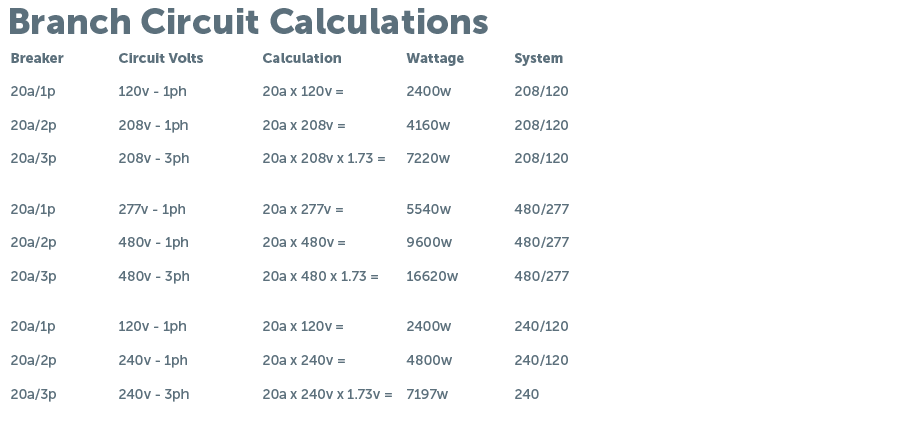

What’s a Watt? (And Other Electrical Fundamentals)
Posted by Mike Ruff on in Fundamentals
Basic electrical calculations involve three parameters, volts, amps and watts.
Volts
Here in the United States, we design according to specific voltages provided by our utility companies. In residential construction, we often have 120/240V, single phase, 3-wire, while in commercial construction we typically have 120/208V, 3 phase, 4-wire or 277/480V, 3 phase, 4-wire (although older facilities may have 240V, 3 phase, 3-wire AND 120/240V, single phase, 3-wire).
The lower number in the system voltage is the voltage from phase wire to neutral, and the second (higher) number is the phase-to-phase voltage.
Watts
So what’s a watt? A watt is a unit of power, named after Scottish engineer James Watt, defined as one joule per second. The power required by a piece of equipment is rated in watts (or kw), and the power required by the equipment remains the same, regardless of the voltage available. Therefore a watt is a watt is a watt.
Amps
The amount of current to produce power is measured in amps and changes based on voltage available. So, if we know a piece of equipment has a certain output and we know the building voltage, how do we find the amps so we can size the wire correctly? What are the calculations used to solve for volts, amps and watts?
Here are the formulas:

That’s all there is! The challenging part is that there are so many voltage configurations available. The most common distribution voltages are 480/277v, 3 phase, and 208/120v, 3 phase. Some older distribution voltages are still in use and are 240v, 3 phase, as well as 240/120v, 1 phase. Some basic branch circuit calculations are as follows:

Now, if we receive information in one form; ie a piece of equipment or a tenant requires 100a at 208v, 3 phase, but the building distribution is 480v, 3 phase, how do calculate the amps at 480v? If we think of converting our information to kw first, we can switch between voltages and phases with relative ease.

We hope this overview clarifies the confusion that occurs when calculating voltages and phases and these formulas help you perform simple electrical calculations with confidence. We love educating people about engineering, so please contact us for more assistance.

 Previous STORY
Previous STORY